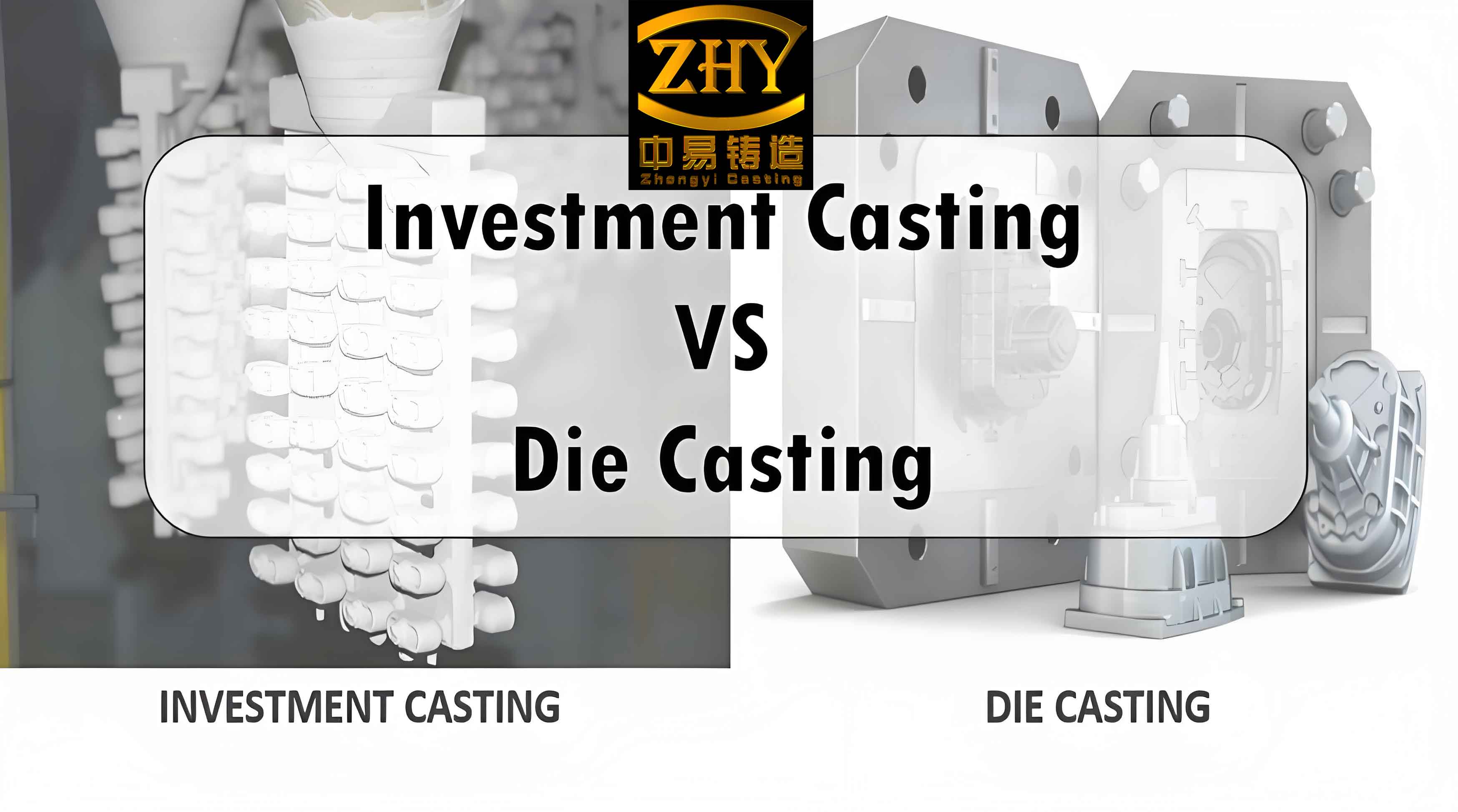
In the manufacturing sector, choosing the right casting process can greatly affect both the quality of the product and the efficiency of production. This article provides a detailed comparative analysis between investment casting and die casting, particularly focusing on their applications in high-volume production environments.
Overview of Investment Casting and Die Casting
Investment Casting: This process involves creating a wax pattern, which is then coated with a refractory ceramic material. Once the ceramic material hardens, the wax is melted out to create a mold, and molten metal is poured into this cavity. After the metal solidifies, the ceramic shell is broken away, leaving the final product.
Die Casting: Die casting involves forcing molten metal under high pressure into a mold cavity. The mold, typically made from hardened steel, is created using two hardened tool steel dies that have been machined into shape and work similarly to an injection mold during the process.
Comparative Analysis in Key Areas
- Precision and Complexity
- Investment Casting: Offers excellent detail and accuracy, suitable for complex shapes with intricate features.
- Die Casting: Provides good detail and accuracy, but is slightly less effective at extremely intricate geometries compared to investment casting.
- Material Flexibility
- Investment Casting: Compatible with a wide variety of metals, including high-performance alloys.
- Die Casting: Generally limited to non-ferrous metals, such as zinc, copper, aluminum, and magnesium alloys.
- Production Speed and Volume
- Investment Casting: Slower than die casting due to the multi-step process involving wax pattern creation and ceramic coating.
- Die Casting: Highly efficient for large volumes due to the rapid cycle times once dies are created.
- Cost Implications
- Investment Casting: More labor-intensive and typically more expensive at lower volumes, but cost-effective for producing complex parts in smaller to medium quantities.
- Die Casting: High initial costs due to die creation, but very cost-effective at large volumes due to quick production times and minimal waste.
- Finish and Aesthetics
- Investment Casting: Typically provides a smoother surface finish, reducing the need for secondary finishing processes.
- Die Casting: May require additional machining or finishing to achieve the desired surface quality.
Practical Applications in High-Volume Production
The following table illustrates the suitability of investment casting and die casting for different high-volume production scenarios:
| Application | Investment Casting | Die Casting | Preferred Method |
|---|---|---|---|
| Automotive Parts | Complex engine components | Mass-produced gearbox cases | Die Casting for simplicity and volume |
| Aerospace Components | Precision airframe parts | Bulk door handles and fittings | Investment Casting for complexity and strength |
| Consumer Electronics | Delicate components | Robust casings and frames | Die Casting for volume and cost-effectiveness |
Conclusion
In high-volume production settings, the choice between investment casting and die casting largely depends on the specific requirements of the project, including complexity, material specifications, and cost constraints. Die casting is generally favored for its speed and efficiency when producing large quantities of relatively simple parts. In contrast, investment casting remains the preferred method for producing high-precision, complex parts where the superior material properties of investment castings outweigh the slower production times and potentially higher costs. As manufacturers continue to push the boundaries of both technologies, the decision will increasingly hinge on specific project needs rather than broad generalizations about each process’s capabilities.
